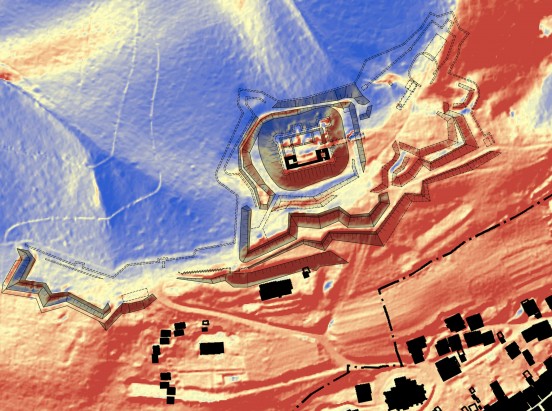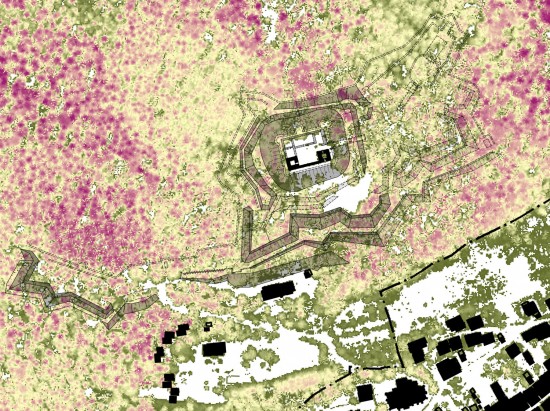







Lanckorona
The project aims to activate the area for tourism through the implementation of different panoramic and natural scenarios, also medieval and modern fortification scenarios, as well as religious and pilgrimage scenarios. The summit and the western slopes of Castle mountains have been included in the UNESCO World Heritage List as a causal and compositional site with the largest and most important calvary station in Poland – Kalwaria Zebrzydowska. The “discovery” of the Lanckorona Fortress required specific actions, such as the thinning of greenery, proper location of forest paths, local additions, clarification and tightening of the bastion profiles, reconstruction of fortifications, creating information boards and museum exhibitions. The castle will be completed locally by a superstructure with additional preventive conservation methods as well as secured and adapted as a permanent ruin which, however, will not be identical with its reconstruction. There are also actions related to the social “buffer zone”, such as events, exhibitions, historical reconstructions, curator tours, etc. Our goal is to provoke a rapid discovery of a “new” monument of Lesser Poland. The discovery of an apparent ex nihilum, of a huge, complex fortification, which inspires to explore, is based on the concept of the mystery and the historical secret of Castle mountain. It perfectly fits the genesis of the fortress – the Confederacy of Bar – mysterious and ambiguous.
Project: 2017 / 2018
Area (Castle Mountain): 43.575 m2
Area (Master Plan): ~1.200.000 m2
Client: Community of Lanckorona
Range of services:
Preliminary concept design (Master Plan)
Architectural concept design (Castle Mountain)
Building permit design (Castle Mountain)
Project team:
Maciej Kronenberg
Mateusz Maj
Piotr Knez
Przemysław Tabor
Weronika Bogal
In cooperation with:
urban planning – Ph. D Janusz Jeżak (www.iep.krakow.pl)
military architecture expert – Ph. D Krzysztof Wielgus
archeology expert – Eligiusz Dworaczyński
nature expert – professor Zbigniew Mirek
conservation of listed buildings – Marek Sobol
structural engineering – Przemysław Ruchała, Andrzej Cisowski, Dariusz Beresiński
sanitary engineering (water and waste) – Zapart Projekt
electrical engineering – SEQVENS Łukasz Matlak
Visualisation: Flexiforma
